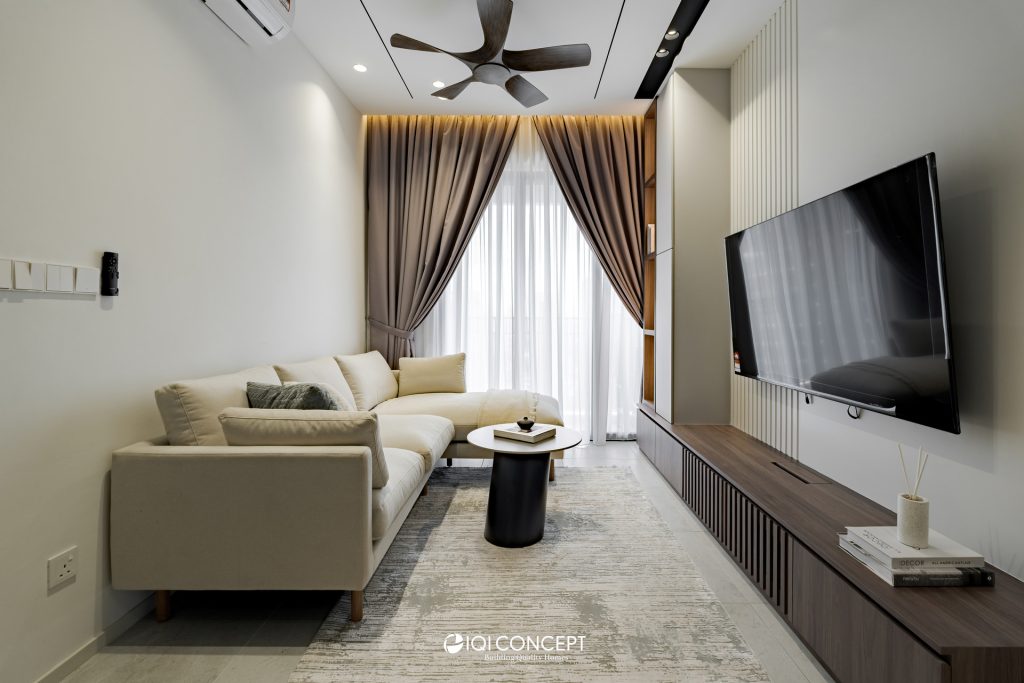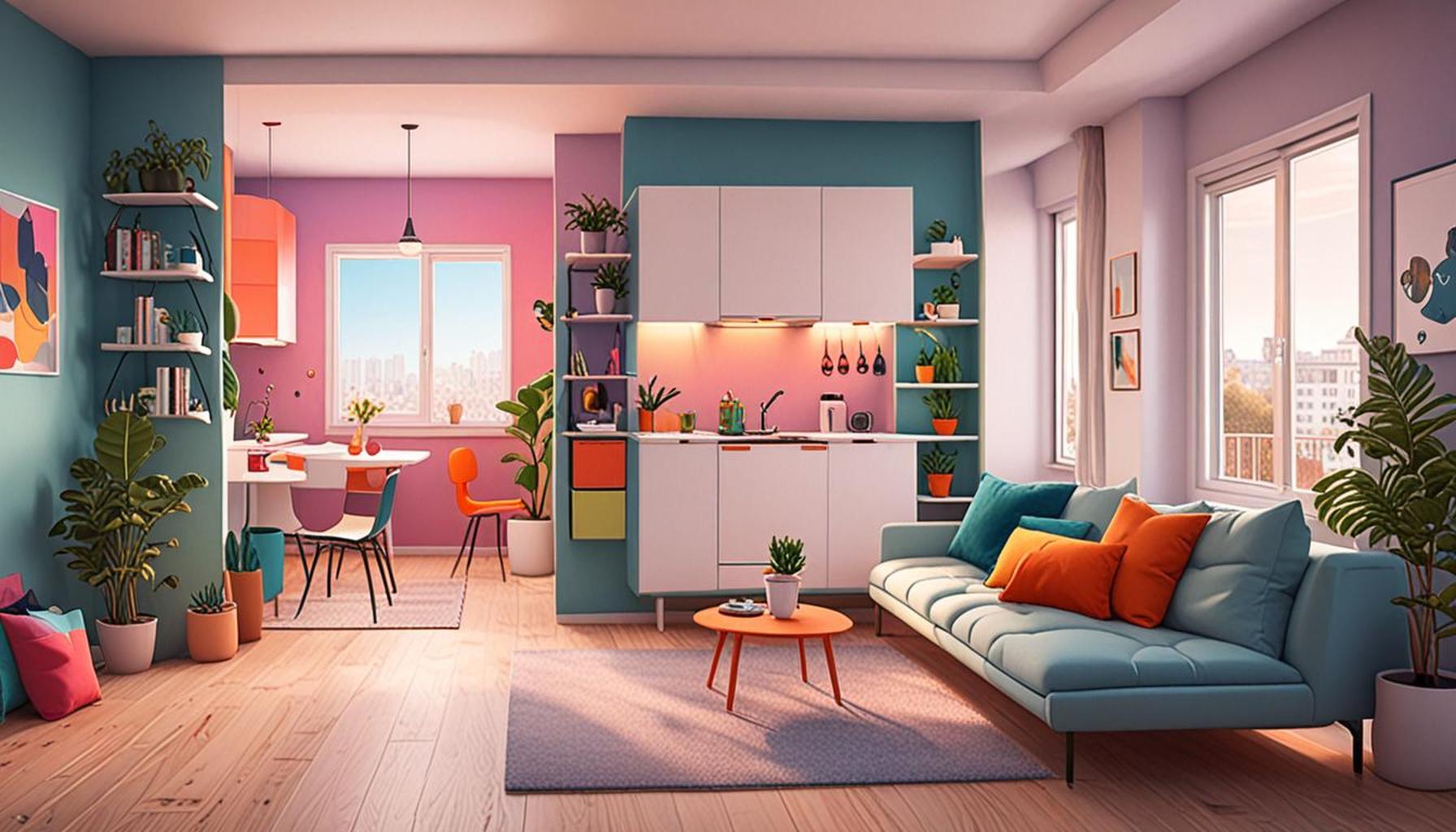The Art of Letting Go: Minimalism Tips to Reduce Items and Increase Space Efficiency

Understanding the Impact of a Minimalist Lifestyle
In a society where material possessions often define status and form the basis of our daily lives, the allure of minimalism stands as a powerful counter-narrative. By choosing to let go of items that do not add value, we can not only reclaim our physical space but also liberate our minds from the chaos that often accompanies clutter. This intentional simplification can lead to a deeper appreciation of what we truly value, enhancing our overall quality of life.
Adopting a minimalist lifestyle offers numerous benefits that extend beyond mere aesthetics. Here are a few compelling reasons to consider embracing this approach:
- Increased tranquility: Studies have shown that environments with less clutter can lead to reduced stress and improved mental clarity. For example, a clean, organized home can make it easier to focus on work, hobbies, or simply relaxation, thus contributing to an overall sense of well-being.
- Improved organization: When you minimize the number of items in your home, organizing what remains becomes more intuitive. This can streamline daily routines, making it quicker to find essentials, such as keys, documents, or cooking tools, ultimately saving time and reducing frustration.
- Financial savings: A mindset geared toward minimalism often translates to fewer impulse purchases. When you consciously consider whether a new item adds real value to your life, you may find yourself spending less and, as a result, freeing up funds for experiences that truly enrich your life, such as travel or education.
Minimalism is not just a practice; it is an ethos that encourages a thoughtful approach to how we consume and engage with the world. It prompts us to prioritize what truly matters, whether that be relationships, experiences, or personal growth. The emotional weight carried by our possessions can often be heavy, and understanding this can be the first step toward a more meaningful existence, unencumbered by excess.
To begin your decluttering journey, start by identifying items that no longer serve a purpose. Look around your home—are there clothes in your closet you haven’t worn in years? Kitchen gadgets that seemed essential at one time but now just gather dust? By assessing these items critically, you can create an environment that reflects your current self and aspirations.
In upcoming sections, we will delve into practical tips for maximizing your space and minimizing your belongings. From the “one in, one out” rule to more extensive decluttering challenges, there are various methods available to help streamline your lifestyle. This journey towards minimalism is not only about physical space; it is fundamentally about creating a life that resonates with your values and vision for the future.

DIVE DEEPER: Click here to discover the power of mindful living
Practical Strategies for Decluttering Your Space
Embarking on a minimalist journey often begins with the simple yet profound act of letting go. The process might seem daunting at first, especially in our consumer-driven society where every item seems to carry a story or a sense of obligation. However, by employing targeted strategies, anyone can navigate the decluttering process with confidence and ease.
One effective approach is the one in, one out rule. This principle encourages you to clear space by ensuring that whenever you bring a new item into your life, an equivalent item must leave. This method not only promotes mindfulness around purchases but also prevents the accumulation of unneeded belongings. Consider implementing this rule while shopping; ask yourself if you truly require an item and what you will part with in order to accommodate it.
Another effective strategy is the 30-day minimalism challenge. Each day, participants eliminate items from their homes, with the quantity increasing daily. For instance, on the first day, you remove one item, on the second day, two items, and so forth. By the end of the 30 days, you would have decluttered a remarkable total of 465 items. This gradual approach encourages reflection on your possessions, fostering a deeper understanding of what holds true value in your life.
- Make Use of the Four-Box Method: Label four boxes as “Keep,” “Donate,” “Sell,” and “Trash.” As you go through your belongings, sort items into these categories. This system can simplify decision-making and help you maintain a clear focus.
- Practice the 90/90 Rule: Look at each item and ask whether you’ve used it in the past 90 days or if you plan to use it in the next 90 days. If the answer is no, it’s time to let it go.
- Focus on Sentimental Items: Items with emotional significance can often be the hardest to part with. Instead of holding onto everything, consider keeping just a small collection that truly brings joy or evokes fond memories.
Alongside these practical methods, it is vital to cultivate a mindset of gratitude and acceptance. Recognize that letting go is not about loss but about making space for what truly enhances your life. Enable yourself to appreciate the memories attached to objects without being bound by them. This shift in perception will empower you to face your possessions with clarity and intention.
As we move forward, we will explore the psychological aspects of attachment and how they influence our belongings. Understanding what drives our connection to our things can be a game changer in the minimalist journey. You’ll uncover not only how to efficiently reduce items but also how to embrace a space optimized for serenity and fulfillment.
| Minimalism Strategies | Impact on Space Efficiency |
|---|---|
| Decluttering Regularly | Creates an organized environment, reducing stress. |
| Prioritizing Quality Over Quantity | Investing in fewer, high-quality items increases longevity and satisfaction. |
| Utilizing Vertical Space | Maximizes area for storage, leaving floors clear for movement. |
| Digital Alternatives | Reduces physical waste, promotes order through online storage solutions. |
In the realm of minimalism, the strategies adopted can significantly transform not just your possessions but also your living environment. Implementing techniques such as decluttering regularly ensures a stress-free space by keeping only those items that serve you. Additionally, prioritizing quality over quantity means that the items in your possession not only last longer but also enhance the overall aesthetic of your home. Another impactful strategy is to utilize vertical space, which helps keep your living area open and functional. Items can be stored up high, allowing for a cleaner floor space to promote free movement. Moreover, the rise of digital alternatives frees up significant physical space, enabling the transition to a more organized, clutter-free life. Each method contributes to mechanizing the essence of minimalism: achieving more with less.
EXPLORE FURTHER: Click here to discover how decluttering can free your emotions</p
Understanding the Psychological Attachment to Our Belongings
As we delve deeper into the art of letting go, it is essential to consider the psychological factors that play a significant role in our relationship with material possessions. Many of us develop an emotional bond with our belongings, influenced by memories, sentiments, and a sense of identity. This attachment can complicate the decluttering process and hinder the move towards minimalism.
One key element to explore is the concept of emotional attachment. For example, a pair of shoes may remind you of a special occasion or a cherished friend. However, retaining too many items can lead to clutter, preventing you from fully enjoying or utilizing your space. To counteract this, approach your possessions with mindfulness. Ask yourself whether each item truly enhances your life or merely occupies space. By reframing your perspective, you can untangle emotional connections and start making more intentional choices.
Additionally, individuals often hold onto items with the belief that they will “use them someday.” This mindset fosters unnecessary clutter, as it’s common to accumulate various tools, gadgets, or clothes that seldom see the light of day. According to a survey conducted by The National Association of Professional Organizers, 80% of people use only 20% of their belongings on a regular basis. This statistic underscores the importance of reevaluating what we truly need.
When faced with difficult decisions, consider implementing the “If Not Now, When?” test. If you find yourself hesitant to let an item go, challenge that hesitation by asking when you realistically plan to use it. If the answer remains vague or elusive, you might feel empowered to release it. Letting go can then become a statement of liberation rather than a source of anxiety.
- Visualize Your Ideal Space: As part of the decluttering process, create a mental image of your ideal living space. This vision can guide your decision-making when evaluating each item. Ask yourself if the item in question contributes to that vision.
- Seek Accountability: Share your minimalist journey with a friend or family member who can provide support and encouragement. They can help you stay focused and bolster your resolve to let go of unnecessary items.
- Revisit Your Values: Clarify what matters most in your life. By aligning your possessions with your core values, you can discern which items genuinely hold significance and which can be discarded.
It’s important to acknowledge that embracing a minimalist lifestyle doesn’t mean stripping away everything that brings you joy. Rather, it’s about discerning which elements contribute positively to your life. Acknowledging that less can be more paves the way for enhanced efficiency and tranquility within your environment.
As you move forward in your decluttering journey, strive to cultivate a practice of conscious consumption. This means being more discerning about future purchases and ensuring that what you bring into your life truly resonates with your values and enhances your well-being. Establishing this framework can help maintain the space you’ve worked hard to create.
DISCOVER MORE: Click here to uncover the benefits of decluttering
Embracing Freedom Through Minimalism
As we conclude our exploration of the art of letting go, it becomes clear that minimalism is not just about reducing clutter; it is a profound journey towards reclaiming our space and enhancing our quality of life. By reflecting on our emotional attachments and challenging the mindset of “just in case,” we empower ourselves to make more intentional decisions about our belongings. The essential practice of mindfulness can transform not only our physical environments but also our mental landscapes.
In adopting minimalism, we are encouraged to rethink our priorities and embrace a lifestyle that aligns with our core values. By visualizing our ideal spaces, seeking accountability, and continuously evaluating our possessions, we cultivate an environment that fosters clarity and tranquility. It is important to remember that minimalism does not equate to deprivation; instead, it celebrates the idea that less can be more, encouraging us to cherish the items that enrich our lives.
As you embark on your own journey towards minimalism, consider that the process is ongoing. Create a habit of conscious consumption, making sure that new items align with your envisioned lifestyle. This will not only maintain the space you’ve worked hard to curate but also support a more fulfilling and joyful way of living. Letting go can be liberating, inviting clarity and space efficiency into our lives. Embrace this freedom, and enjoy the simplicity that comes with a decluttered existence.


